
The Hofburg in Vienna is the former Winter Imperial Residence. It was the Habsburgs' principal winter residence, as the Schönbrunn Palace was their preferred summer residence. From 1438 to 1583 and from 1612 to 1806, it was the seat of the kings and emperors of the Holy Roman Empire of the German Nation, thereafter the seat of the Emperor of Austria until 1918. Today it is the official seat of the Austrian Federal President. This complex of imperial edifices, the first of which was constructed in 1279, grew with the empire, and today the palace is virtually a city within a city. The earliest parts surround the Swiss Court, a courtyard named for the Swiss mercenaries who performed guard duty here. The Hofburg's styles, which are not always harmonious, result from each emperor's opting to add to or take away some of the work done by his predecessors. Called simply die Burg, or “the Palace,” by the Viennese, the Hofburg has withstood three major sieges and a great fire. Of its more than 2,600 rooms in 18 buildings, 54 staircases and 19 courts, fewer than two dozen rooms are open to the public.



The most common way to enter the Hofburg is from Michaelerplatz of Michael's Plaza. At the center of the wing is a monumental gate, the Michaelertor. Along the sides of the three entrances are colossal statues of the labors of Hercules. At either end of the Michaelertrakt are large wall fountains with sculpture groups. The fountain on the right, the “Mastery of the Land”, was designed in 1897 by Edmund Hellmer and symbolizes the Austrian army. The fountain on the left is known as the “Mastery of the Sea”. It was sculpted in 1895 by Rudolf Weyr and symbolizes the Austrian naval power.




On the left side of the plaza is the Michaelerkirche (St Michael's Church), the former parish church of the Austrian monarchy. It was originally built in 1221 but regularly expanded and modified to such an extent that it now consists of an amalgam of architectural styles. The tower is still Gothic and dates from the 14th century. The neoclassicist façade was designed in 1792. Of note is the sculpture group above the Baroque porch, depicting the Fall of Angels, created by Lorenzo Mattielli.



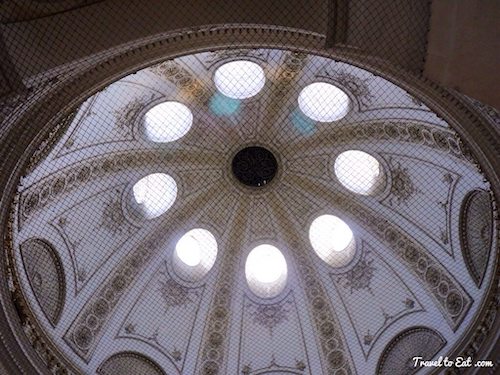

An ornate Baroque gateway, the Michalertor, connects the Michaelerplatz with a large courtyard, the In der Burg, sometimes also referred to as the Innenhof. Really, it is more of a domed space with the road running through it. The monumental gateway is decorated with expressive statues of Hercules symbolizing the mottoes of various rulers. Inside the wide passageway are entrances to some of the most famous attractions in the Hofburg: In der Burg straight ahead, the Winterreitschule (Winter Riding School) on the left and the Kaiserappartements (apartments of the Emperor) and Sisi Museum to the right. The Michalertor was the site of the Hofburg Theater until 1888. After its demolition Emperor Franz Joseph I went back to the old plan drawn up by J. E. Fischer von Erlach and ordered the construction of a building linking the Reichskanzleitrakt and the Winterreitschule. This was done between 1889 and 1893.



The oldest sections of the Hofburg originate from the 13th century and were primarily constructed by the last of the Babenbergers or by Ottakar II of Bohemia. These oldest sections of the castle form a square, surrounding what corresponds somewhat to today’s Swiss Court (Schweizerhof). On the side of the Swiss Court are a gothic chapel (Burgkapelle), from the 15th century, and the treasury (Schatzkammer). This Swiss Court was built during the reign of Emperor Ferdinand I (1503-1564) in the style of the Renaissance. Its famous red-black Swiss Gate (Schweizertor) displays the many titles of Emperor Ferdinand I and the insignia of the Order of the Golden Fleece. The lower section of this wing once accommodated the imperial kitchen.

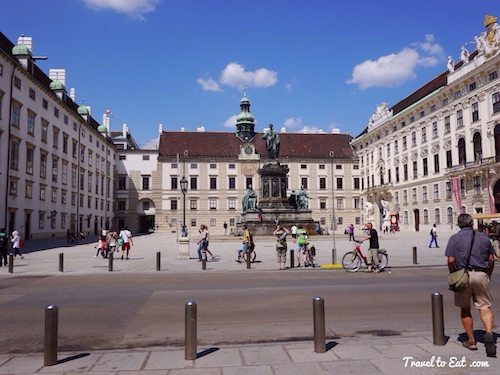

To get to the Swiss Court, you pass through the Michalertor from the Michaelerplatz to the In der Burg or Innenhof and turn left through the Schweizertor. To your right lies the Innenhof with a statue of Emperor Francis II by Pompeo Marchesi from 1846. On its plinth may be read a line from his will: “My life is for my peoples”. Across from the Swiss Gate is the Amalienburg, named after Amalie Wilhelmine, the widow of Joseph I. Following the example of his father, Maximilian II had a palace built between 1575 and 1577 for the particular use of his son. He was called Rudolf, hence the name Rudolfsburg. The upper floor was added in the 17th century and the tower rebuilt. In the 18th century, however, the name was changed to Amalienburg when the Empress Wilhelmine Amalie lived here during her widowhood. Of note is the small tower with its dome and the astronomical clock on its façade. The building to the left is the Leopold Wing (Leopoldinischertrakt) which was first erected in the 1660s under Emperor Leopold I (1640-1705). The architect was Filiberto Lucchese, but after the Siege of 1683 by the Turks, the wing was rebuilt by Giovanni Pietro Tencala with an additional floor installed. The buildings were occupied by Maria Theresa (1717-1780) and her husband Francis Stephen of Lorraine. Their apartments together with those of Joseph II (1741-1790) opposite them, now form part of the Presidential Chancellery. The Austrian President works in what was formerly Joseph II's study. The lower section of this wing as well as that of the Amalienburg served as an enormous wine cellar for the Hofburgs. To the right is the Imperial Chancellery (Reichskanzleitrakt) designed by Hildebrandt in 1723 and completed by J. E. Fischer von Erlach, who gave it the Baroque facade in 1730. After the end of the Holy Roman Empire, this wing housed the apartments of the Duke of Reichstadt (Napoleon II) and later those of Emperor Francis Joseph I. Some of its rooms are still set out as State Apartments.
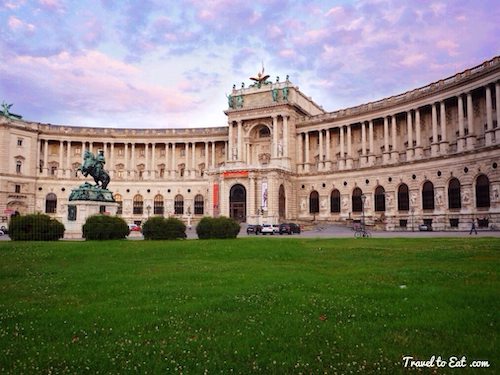
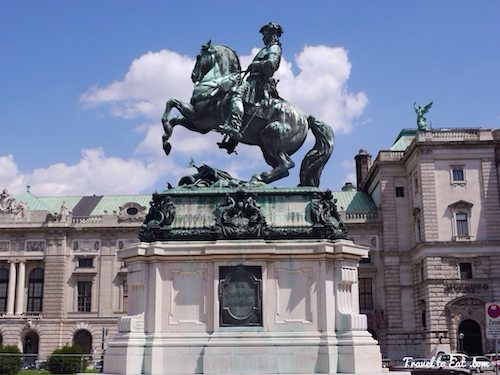

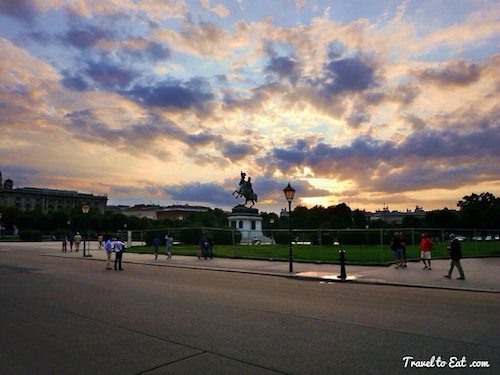
The Heldenplatz (Heroes' Square) in the Hofburg, in front of the Neue Burg, was originally a parade ground. After the erection of the two statues, one of Prince Eugene of Savoy who defended the Turks (1865) and the other of Archduke Charles who won the Battle of Aspern in 1809 (1859), it was given the name Heldenplatz. Both statues are the work of Anton Dominick Ritter von Fernkorn. In 1809, a part of the old bastion adjacent to the old castle was demolished in the course of the Napoleonic Wars. All the way up to the present Ringstraße, new grounds were laid, in which the neoclassical Castle Gate (Burgtor) was integrated. Within the new walls which were erected in 1817, three gardens were laid: the private Imperial Castle Garden (Burggarten), Heroes Square as a lawn with boulevards, and the People’s Garden (Volksgarten) with the Temple of Theseus (Theseustempel), which, along with the Burgtor, was designed by Peter von Nobile. A further addition from this period (1804) is the Hall of Ceremonies (Zeremoniensaal) by Louis Montoyer, which at that time was a protrusion jutting out of the complex. Today it is fully integrated into the New Castle (Neue Burg) finished in 1913.

On March 15, 1938, Adolf Hitler proclaimed from the balcony of the Neue Burg onto Heldenplatz (Heroes’ Square) the “Anschluss” of Austria into the Third Reich. Thus Austria became the first “casualty” of World War II; I will have a post on this subject in the future.

The Outer Gate of the Hofburg palace was built exclusively by soldiers as in Roman times to plans drawn up by Peter Nobile. It was inaugurated in 1824 on the anniversary of the Battle of Leipzig at which Napoleon was at last defeated and converted into a memorial to heroes in 1933.
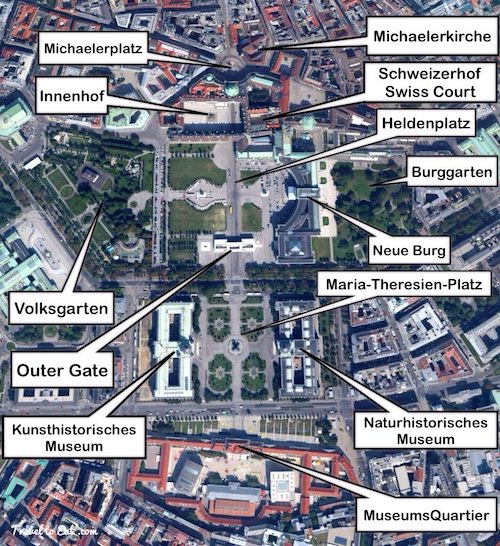



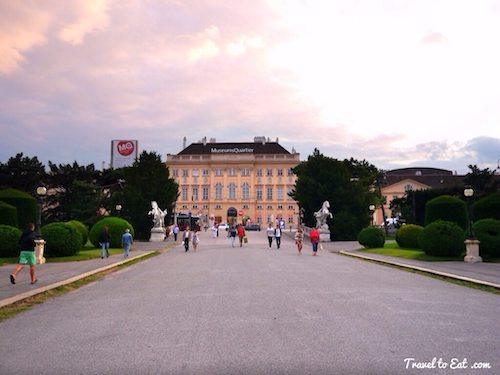
The Maria Theresien Platz is located directly at the Ringstrasse, embedded in imperial scenery between the Museum of Natural History and the one for Art History. Directly across the Ringstrasse you can find the Hofburg and across the Museumsplatz there is the MuseumsQuartier. Following the enlargement of Vienna after the demolition of the city walls in the 1860s, the Hofburg had its last great expansion. An Imperial Forum (Kaiserforum) was planned, a two-winged structure reaching beyond the Ringstraße, with the twin museums (Kunsthistorisches Museum and Naturhistorisches Museum) as flanks and terminating at the old Imperial Stables (the Hofstallungen, not to be confused with the much older Stallburg) of Fischer von Erlach. The project was led by Gottfried Semper and later by Karl Freiherr von Hasenauer. The museums were completed in 1891, but construction of the rest of the forum dragged on slowly and conflicted since, besides ostentation, no real function could be found for the enormous construction project. In 1913, the south-west wing, the New Castle (Neue Burg), was completed. However, the Imperial Forum was never finished. In its place, Heroes Square (Heldenplatz) and Maria Therese Square (Maria-Theresien-Platz) were laid.
I will end this post with a few observations. The Hofburg Palace invites comparison to the Versailles of Louis XIV. Where Versailles is the vision of one man, the Hofburg represents the cumulative efforts of generations of Hofburgs, resulting in a hodgepodge of buildings. The overall effect is less grandiose and really reflects the differences between the polar ends of Charlemagne's legacy. The Hundred Years War converted France from a disparate set of feudal holdings into a centralized modern state controlled by the King and expressed in Versailles. In Eastern Europe, the decentralization was institutionalized in a group of electors from independent states that came together to elect the Holy Roman Emperor. In Austria, the Emperor never really consolidated his land holdings or power. The Hofburg is really a reflection of this political reality. I plan a future post to explore the comparative history of France and Austria along these lines. In any case, the Hofburg is a remarkable place both for the history contained here and for the many beautiful objects it contains; you should visit.
References:
Hofburg: http://www.hofburg.com/english/travel-to-the-hofburg/where-to-find-us/
Planetware: http://www.planetware.com/vienna/imperial-palace-a-w-hofbur.htm
View on Cities: http://www.aviewoncities.com/vienna/hofburg.htm
Hercules at the Hofberg: http://www.gadling.com/2010/03/05/hercules-at-the-hofburg-palace-in-vienna/
Sisi Museum: http://www.wien.info/en/sightseeing/sights/imperial/sisi-museum

